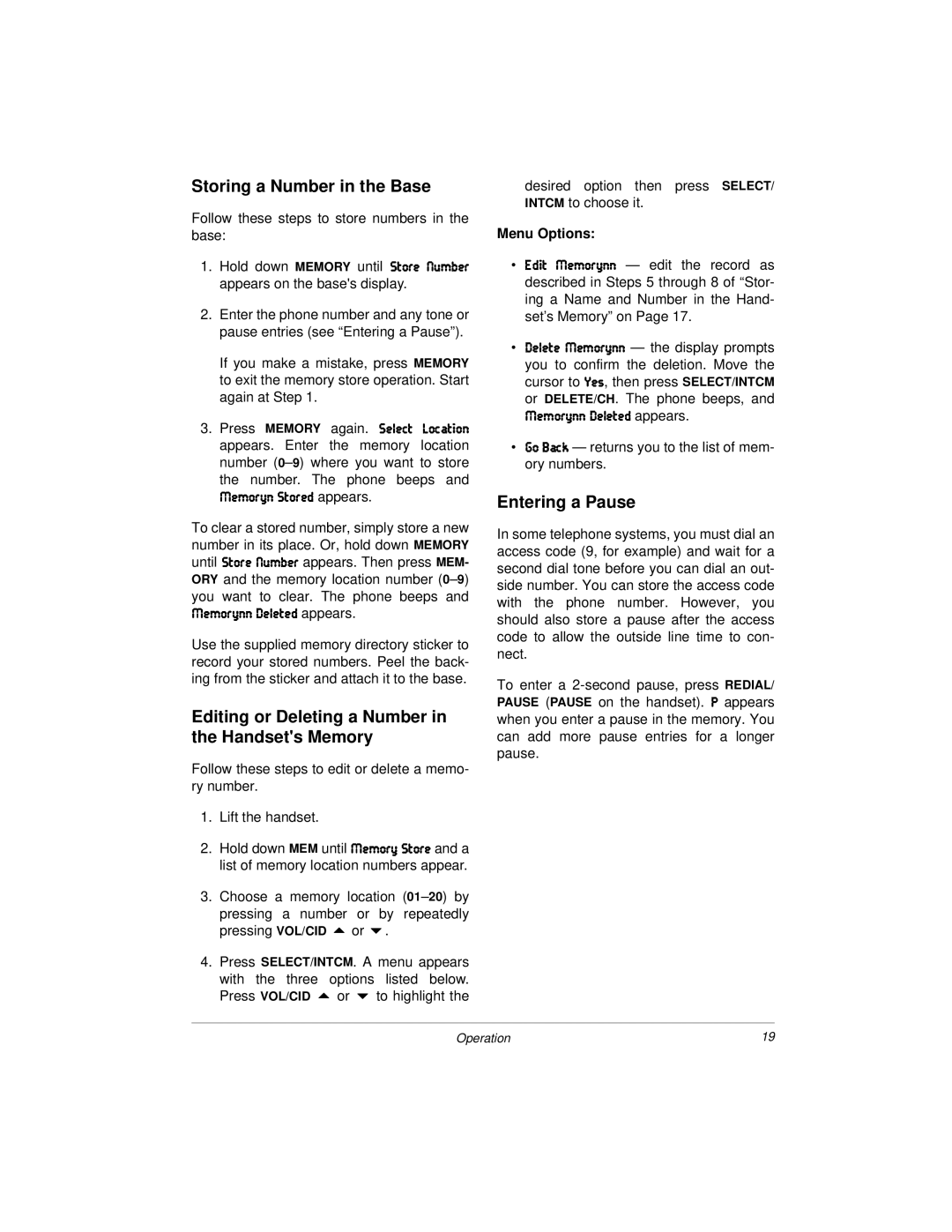900 MHz Digital Spread Spectrum Cordless Phone with Dual Caller ID, and Speakerphone, Dual Keypad specifications
Radio Shack, a name synonymous with electronics, once dominated the retail landscape by providing consumers with a wide array of gadgets and devices. Among its offerings was the innovative Speakerphone, Dual Keypad, 900 MHz Digital Spread Spectrum Cordless Phone. This corded marvel boasted several features and technologies that set it apart from its contemporaries, pushing the boundaries of convenience and utility for everyday communication.One of the standout features of this cordless phone was its dual keypad. Designed for maximum versatility, it allowed users to dial numbers easily from multiple angles and setups, making conversations and operations seamless. This ergonomic enhancement was perfect for any household or office environment where quick access and efficiency were key.
At the heart of the phone was its 900 MHz Digital Spread Spectrum technology. This advanced communications method ensured that users experienced a stable connection with minimal interference. Unlike traditional analog phones that operated on fixed frequencies, this technology utilized a wider range of frequencies, which significantly improved the quality of calls. The result was clearer audio, reduced static, and enhanced privacy of communication.
Another revolutionary characteristic of this phone was its dual caller ID feature. Users could view incoming call information on both the base unit and the handset, ensuring that they never missed important calls, whether at home or on the go. This functionality was a game changer, allowing users to screen calls effectively and manage their communication more efficiently. With the ability to store caller ID information, consumers could keep track of whom they were connecting with, adding an extra layer of convenience to their daily lives.
The phone also featured an integrated speakerphone capability, providing the flexibility to engage in hands-free conversations. This was particularly beneficial during multi-tasking scenarios, such as cooking or while working at a desk. Users could easily switch between private and speakerphone modes, catering to various communication needs and preferences.
In summary, Radio Shack's Speakerphone, Dual Keypad, 900 MHz Digital Spread Spectrum Cordless Phone exemplified the pinnacle of communication technology during its time. With features like dual keypads, advanced spread spectrum technology, dual caller ID, and a practical speakerphone function, it delivered a blend of convenience, efficiency, and quality that redefined how people stayed connected. Though Radio Shack may no longer hold the same prominence, its legacy in the evolution of consumer electronics remains significant, showcasing a commitment to innovation and user-centered design.
